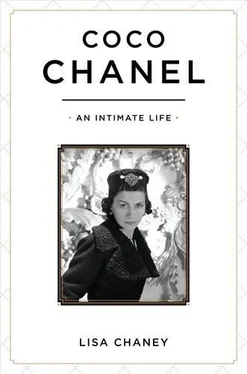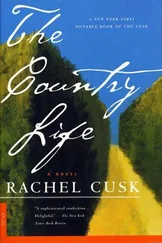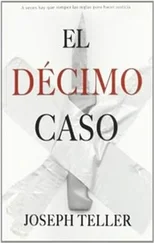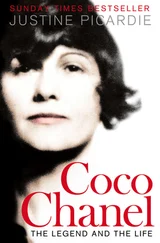Today, the only memorial to any of the Chanels is Joseph’s tavern. The Chanels of Ponteils were unexceptional; theirs were the lives of countless country people. Between 1875 and 1900, the region was hit by a series of exceptional natural disasters. Phylloxera ravaged the vines in the lowlands; silkworm farmers reeled from the effects of a silkworm disease epidemic; and the vast chestnut forests of the uplands were eaten up by la maladie de l’encre, a disease specific to the species. With the core of the rural economy devastated, the villagers of Ponteils could struggle on for only so long. Thousands in the region forsook their birthplace in search of work, and between 1850 and 1914, the population of the Cévennes dropped by more than half.
Joseph Chanel’s second son, Henri-Adrien — Gabrielle’s grandfather — and his two younger brothers were among those whom la maladie de l’encre forced to leave Ponteils. As mountain dwellers, their skills weren’t much use down in the valleys, but eventually Henri-Adrien found work with a silk-farming family, the Fourniers, in Saint-Jean-de-Valériscle. Youth, ignorance and a taste for adventure permitted him the luxury of confidence. This same confidence soon led him to impregnate his employer’s sixteen-year-old daughter.
Virginie-Angélina’s parents’ fury was intense and they insisted that Henri-Adrien should marry their compromised offspring. The prospect of Virginie-Angélina’s dowry may have been the deciding factor in the young man’s compliance. Soon after the ceremony, the newlyweds left the silk farm for Nîmes.
While only fifty miles from Ponteils, Nîmes was a world away from Henri-Adrien’s life in the mountains. Even so, he knew that there were already other refugees from Ponteils there. The town might be frightening, but it was also a powerful lure, with the prospect of higher wages, shorter hours and better medical care. Gabrielle Chanel’s forebears followed the great drift toward France’s towns. A slow but irrevocable change was taking place in the national mindset, the corollary of France’s transformation into an industrial and metropolitan nation.
As for Henri-Adrien, there were few options available to him and, almost inevitably, he turned to market trading. Markets and fairs were still essential elements in the economy, serving the majority of everyday needs. Some people bought enough for just one day at a time; others traveled miles to market to store up their provisions. Many made the journey to the markets and fairs simply for the contact with the outside world. Everything was there, from clothes — or the wherewithal to make them — to livestock, food and tools, to the strolling players: “charlatans, magicians, musicians, singers… and gamblers.” 2Some fairs even functioned as marriage marts, where, effectively, one could buy a wife.
For almost a year, Henri-Adrien and his wife, Angélina, stayed put at Nîmes. Their son Henri-Albert (always known as Albert) was born there. Then, one day, collecting up their meager belongings and their little boy, they were gone. For years, the Chanels were to continue as itinerant market traders, eventually producing nineteen children in a series of cheap lodgings across the south of France.
Meanwhile, helped by the extension of roads and the spread of the railways, a revolution was sweeping across the land. Life in the provinces had continued in much the same way for centuries but, in the fifty years before 1914, it was set to change out of all recognition. The gradual and sporadic nature of change would be swept away by an avalanche of modernization as France was catapulted into the machine age.
Henri-Adrien and Angélina Chanel cobbled together an existence, but their class would be left behind, rendered virtually obsolete by the changes. As for the children, their lives were to straddle two entirely different worlds, one predominantly rural and agrarian, the other modern, industrial and urban. Success depended upon firmly grasping the new. Although now often traveling by the newfangled train, Henri-Adrien remained wedded to the traditional markets and the fairs — tied, like them, to the season-bound rhythms of rural life.
As the Chanels’ children grew up in a succession of backstreet lodgings, they were soon put to work. The eldest, Albert, and his younger sister Louise worked with their parents from earliest childhood. Life was hard for the children, made harder still by being much of the time outside, tending the stand in all weather. The Chanels’ nomadic lifestyle stoked in Albert a desire for the romance of the road and a constant urge for movement. He, too, became a market trader like his father, and sold haberdashery and domestic tools.
In November 1879, Albert stopped at Courpière, a village in the region of Livradois. With winter’s approach, itinerant traders and peddlers did their best to settle down. Albert found a room for himself with a young man called Marin Devolle, left fatherless at seventeen. That November, Marin was twenty-three, and while his carpentry business was going well enough, he could do with the extra money from hiring out a room. Albert and he were soon firm friends. Marin’s younger sister, Eugénie Jeanne (called Jeanne), lived close by with their maternal uncle, Augustin Chardon, a winegrower. Jeanne also kept house for her brother.
Family tradition has it that the twenty-six-year-old Albert was, like his father, a charmer and a showman who had a way with words and also with women. Whether on the market “stage” or playing the exhilarating game of seduction, Albert was unwilling to shoulder much responsibility. He was charismatic and juggled fantasies about who he wanted to be. And each time his pool of buyers and admirers was exhausted, Albert collected his belongings and took off. In January 1880, as he had done before, he left behind him a lovesick girl. This time it was Marin’s sixteen-year-old sister, Jeanne, who would pay a high price for succumbing to the young lothario’s advances.
As the spring wore on, Jeanne was unable to hide her pregnancy. Her family was incensed. Uncle Augustin threw her out, and she went to live with Marin. By no means did all working people see the need to formalize their relationships — particularly if neither land nor worthwhile possessions were involved. But as respectable property-owning artisans, Jeanne’s family felt a cut above the country peasants. While the Devolles didn’t live in Courpière’s poorest quarter, their proximity to the bottom of the social ladder meant that anything pushing them down a rung was taken very seriously.
The mayor was enlisted to find the father of Jeanne’s child. He tracked down Albert’s parents, Henri-Adrien and Angélina, twenty-two miles away in Clermont-Ferrand. When his letter to Henri-Adrien met no response, Marin and two male relatives set off in pursuit. Either Albert Chanel was to marry their kinswoman, or he must recognize paternity of the child. If Chanel refused, they would have him up in court. These threats sufficiently frightened Albert’s parents to divulge his whereabouts.
No sooner had Marin returned to Courpière with Albert Chanel’s address than Jeanne set off after her errant lover, to Aubenas, 125 miles to the south. Now in the final month of her pregnancy, she believed Albert was more likely to make a respectable woman of her if she presented herself without her family. The intrepid girl, who had never before left Courpière, traveled across the country and found Albert established at a tavern. Here, a short time later, at seventeen, she gave birth to a baby girl, whom she named Julia-Berthe.
Albert was not pleased. His aim was to conquer, not to commit, and he absolutely refused to marry Jeanne. He did, however, acknowledge paternity of the child, and conceded to Jeanne’s promotion to being his companion: she was young, and he could do with help in the markets. At a time when the majority of marriages were based above all upon practicality, the loss of Jeanne’s heart to her lover was seen by her community as soft-headed. But beyond that, the thought of her reception on returning home with an illegitimate child made going back impossible. Jeanne accepted Albert’s refusal to marry and stayed at his side. This episode would set the tone for their relationship, and the girl from Courpière would from now on find herself constantly on the move.
Читать дальше












